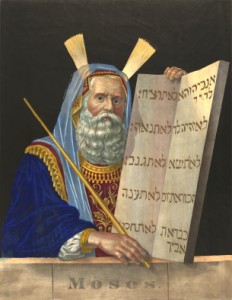 Interfaith ministers recognize the significance of Biblical events and the traditions for peoples of all faiths and backgrounds. An interfaith minister must use this understanding to bring together people of different religions that may have contrasting views on certain aspects of the divine, primarily by recognizing the similarities that differing faiths share. In order to get ordained as an interfaith minister, one must spend time with the traditions of many different cultures and faiths throughout the world. Ministers must be familiar with the history of their customs and how those customs have evolved to where they are today.
Interfaith ministers recognize the significance of Biblical events and the traditions for peoples of all faiths and backgrounds. An interfaith minister must use this understanding to bring together people of different religions that may have contrasting views on certain aspects of the divine, primarily by recognizing the similarities that differing faiths share. In order to get ordained as an interfaith minister, one must spend time with the traditions of many different cultures and faiths throughout the world. Ministers must be familiar with the history of their customs and how those customs have evolved to where they are today.
Passover is an excellent example of a celebration with a rich symbolic history that holds significance for both Jewish and Christian followers. The Jewish people look upon this time as one that commemorates God’s intervention into their slavery as a people in Egypt over 3,300 years ago. God freed them from the bonds of the Pharaoh so that they could leave Egypt and worship freely. Moses was the leader of this Exodus, and this time is historically sited as being the birth of the Jewish nation. Within the Jewish faith, Passover begins on the 15th of Nisan, a month on the Jewish calender. The observance lasts for seven to eight days. The customs associated with the celebrations include the retelling of the exodus from Egypt and the Seder ritual. This service takes place in the home on the first night of passover. The Seder is essentially a service that includes the ceremonial drinking of wine or grape juice prior to the reading of the Kiddush. Participants then perform symbolic cleansing by washing their hands, followed by the consumption of green vegetables that have been dipped in salt water that represents the tears of their ancestors as slaves. There is a breaking of bread into three parts, and the evening is concluded with a meal.
Christians join in the Passover celebration, but they take a slightly earlier time in history as their point of reference. Moses warned the Pharaoh of plagues that would stricken his city if the Jewish people were not freed. The Pharaoh ignored these warning, and the plagues came one by one. The most devastating of these plagues was the death of the first-born son in every family in the city. The spirit of God swept through the city and killed the children in every household that had not displayed their devotion. This devotion was made known by painting the blood of a lamb over the top of the home’s doorway. Any home painted in blood was passed over by the spirit, sparing the life of the child. The blood is symbolic of the blood of Jesus which was shed for the salvation of mankind. Later in the New Testament, Jesus is also referred to as the lamb, referencing the symbolism we see during this time of year. When a minister gets ordained in the Universal Life Church, they will be able to draw parallels between the symbolic actions that allow for grace and salvation between two faiths such as Judaism and Christianity. The Universal Life Church welcomes peoples embracing all significant portions of the Bible from both the historic and the symbolic perspective.

